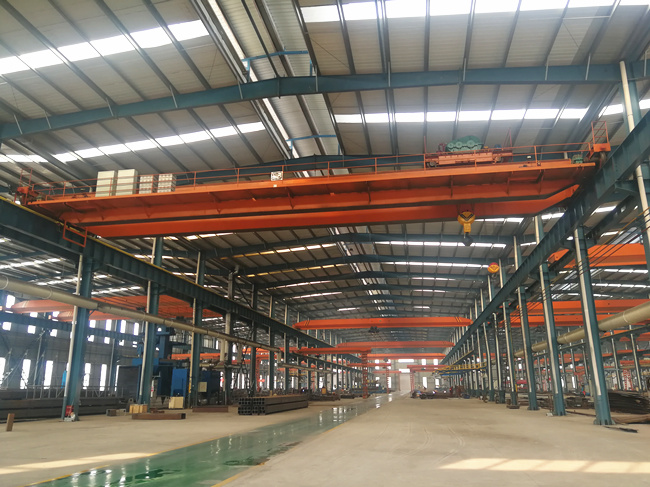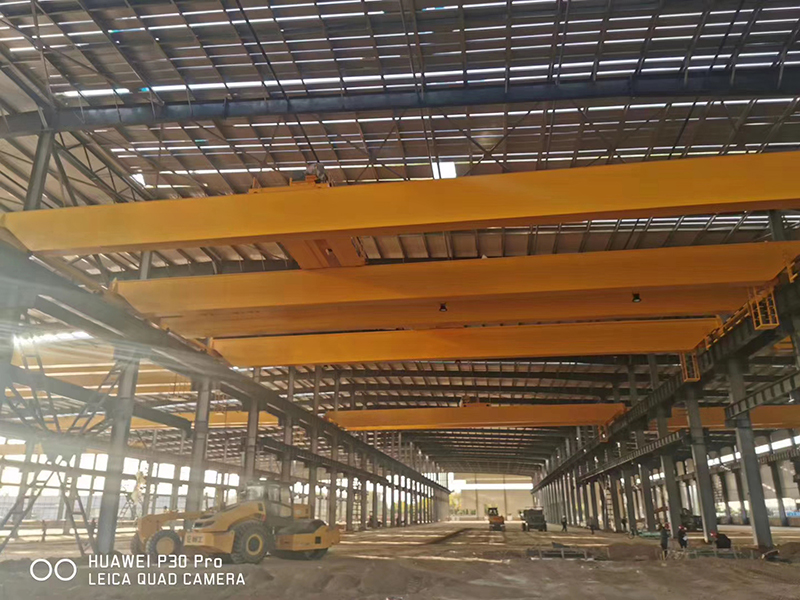In the world of industrial manufacturing, heavy lifting is a common and often essential task. Whether it’s moving massive machinery, handling large components, or managing raw materials, the efficiency and safety of lifting operations can significantly impact a company’s productivity. For demanding tasks that require lifting capacities of 40 tons and beyond, overhead cranes are the unsung heroes of the manufacturing world. In this article, we will delve into the capabilities and applications of 40 ton overhead cranes and explore why they are vital for heavy industry.
The Role of Overhead Cranes in Industry
Overhead cranes, often referred to as bridge cranes or gantry cranes, are material handling devices that use a hoist to lift and move heavy objects horizontally within a defined area. They are installed on an overhead runway system that provides support and allows the crane to travel back and forth. Overhead cranes come in various configurations and lifting capacities, and they are widely used in industries like manufacturing, construction, shipbuilding, and mining.

The primary functions of overhead cranes include:
Lifting and Lowering: Overhead cranes are designed to lift and lower heavy loads with precision. This is crucial for transporting objects within the work area or loading them onto other machinery or vehicles.
Horizontal Travel: The overhead runway system allows the crane to move horizontally, covering a specific area within the facility. This mobility is essential for reaching different points of operation.
Trolley Movement: Most overhead cranes feature a trolley, which can move along the crane’s bridge, enabling lateral movement of the load.
Load Positioning: Overhead cranes offer precise load positioning, making them suitable for tasks that require accuracy and control.
40-Ton Overhead Cranes: The Powerhouses of Heavy Lifting
While overhead cranes are available in various lifting capacities, 40-ton overhead cranes are among the heavyweights of the industrial world. They are specifically designed to handle substantial loads, making them indispensable for a range of demanding tasks.
Key Features of 40-Ton Overhead Cranes:
Impressive Lifting Capacity: The 40-ton overhead crane, as the name suggests, can lift up to 40 tons of material or equipment. This substantial lifting capacity allows it to handle oversized and heavy loads with ease.
Durability and Reliability: These cranes are built to withstand the rigors of heavy industrial use. They are constructed with high-strength materials and precision engineering to ensure durability and reliability.
Precision Control: Advanced control systems and technologies ensure that 40-ton overhead cranes can perform their tasks with precision. This is crucial when handling delicate or expensive equipment.
Versatile Applications: 40-ton overhead cranes are employed in various industries, including manufacturing, steel production, mining, and shipbuilding. They are adaptable to different working environments and tasks.

Applications of 40 Ton Overhead Crane
The versatility of 40-ton overhead cranes makes them suitable for a wide range of applications in heavy industry. Some of the common uses include:
Steel Manufacturing: Overhead cranes are vital in steel mills for moving and positioning heavy steel coils, billets, and other raw materials. They are also used for transporting finished steel products.
Shipbuilding: Shipyards use 40-ton overhead cranes to lift and position large ship components, such as hull sections and machinery. These cranes are essential for building massive vessels.
Mining: In mining operations, overhead cranes are used to handle heavy mining equipment, such as excavators and draglines. They also facilitate the movement of ore and waste material.
Manufacturing and Assembly: In manufacturing facilities, double beam overhead cranes aid in the assembly of oversized machinery, such as industrial presses, turbines, and generators. They ensure that components are precisely positioned and installed.
Construction: Overhead cranes are used in construction projects to lift and place structural elements, such as concrete beams, prefabricated building sections, and heavy construction equipment.
Benefits of 40 Ton Overhead Cranes
The use of 40-ton overhead cranes offers several benefits to industrial operations:
Increased Productivity: These cranes can handle heavy loads quickly and efficiently, reducing material handling time and increasing overall productivity.
Enhanced Safety: Overhead cranes are equipped with safety features like load limiters and collision avoidance systems, minimizing the risk of accidents.
Space Optimization: Overhead cranes can cover a wide area without obstructing the floor space, allowing for efficient utilization of the facility.
Versatility: They can be adapted to various tasks and industries, making them a versatile choice for different applications.
Precision Handling: 40-ton overhead cranes offer precise load positioning, crucial for tasks that require accuracy.
Technological Advancements
As technology advances, overhead cranes, including 40-ton models, have benefited from various innovations:
- Automation: Automation is increasingly being integrated into overhead crane systems. Automated cranes can perform repetitive tasks with high precision and can be controlled remotely.
- Smart Sensors: IoT sensors and data analytics are used to monitor crane performance and predict maintenance needs, reducing downtime and maintenance costs.
- Remote Operation: Some modern overhead cranes can be operated remotely, improving safety and providing operators with a better vantage point.
- Energy Efficiency: Energy-efficient designs and regenerative braking systems help reduce power consumption, making overhead cranes more environmentally friendly.
40-ton overhead cranes are the workhorses of heavy industry, enabling the efficient and safe handling of massive loads in demanding tasks. Their versatility, power, and precision make them indispensable in industries like steel manufacturing, shipbuilding, mining, construction, and more. With technological advancements and a focus on safety and sustainability, the role of these cranes in modern industrial operations continues to evolve, contributing to increased productivity and efficiency in the world of heavy lifting.